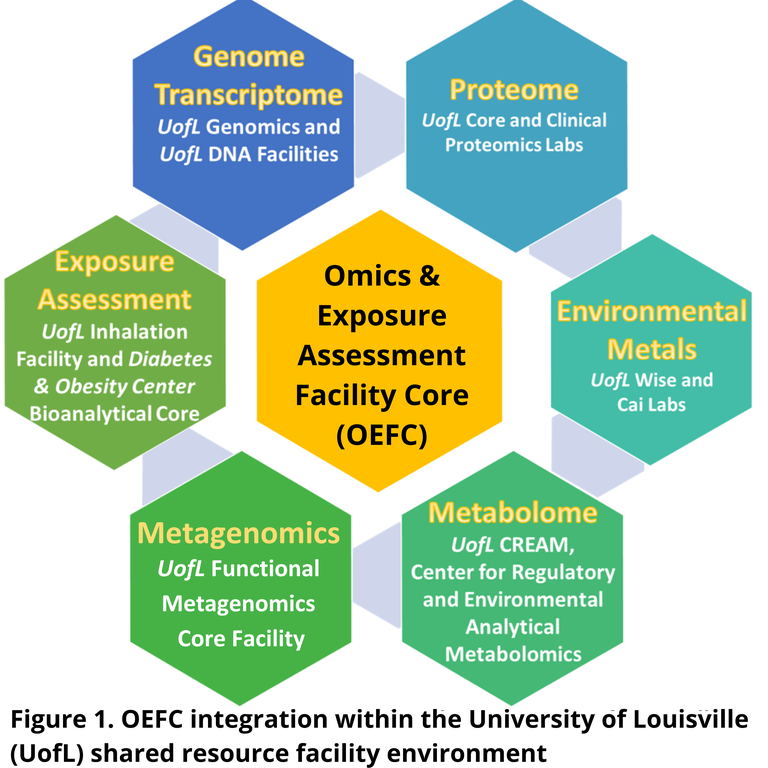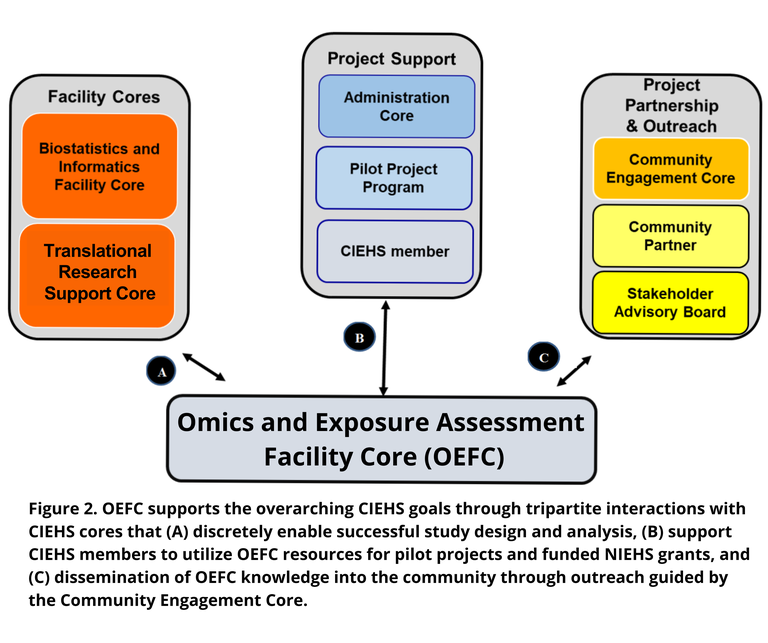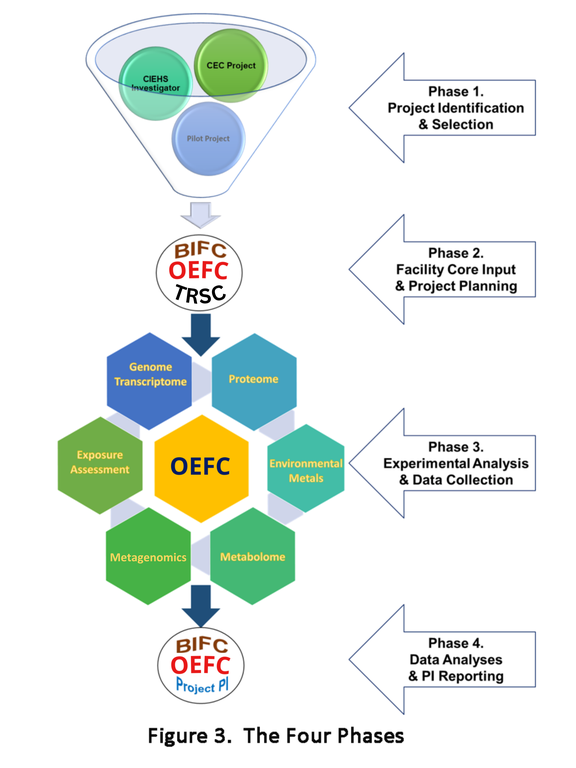Omics & Exposure Assessment Facility Core (formerly ITEMFC)
The Center for Integrative Environmental Health Sciences (CIEHS) seeks to enhance the capacity for environmental health research at University of Louisville (UofL). As university-based environmental health research evolved, investments have been made in shared resource facility cores (SRFC) for their faculty and communities. These cores offer cutting edge scientific services, enabling access to high-end equipment, advanced techniques and specialized expertise that would normally be infeasible for an individual investigator. It is essential for the modern environmental health scientist to understand the numerous SRFCs available within their institution; in terms of accessibility, effective experimental design, data acquisition and subsequent analyses. The overarching goal of the Omics & Exposure Assessment Facility Core (OEFC) is to create a central resource for CIEHS members, allowing them understand, access and effectively use environmental ‘omics and measurement resources currently available at the UofL (Figure 1).

The OEFC will work closely with other CIEHS facility cores to plan research project support (Figure 2A), support of CIEHS investigator and pilot project grant applications (Figure 2B) as well as pursue support of broad dissemination of OEFC capabilities and research successes to the affected or interested populations with greater Louisville community and beyond to national and international stages (Figure 2C). OEFC will accomplish these goals through the following specific aims:

1. Increase access and facilitate use of OEFC shared resource cores by CIEHS members. OEFC will serve our members by (a) explaining the various cores and how they operate, (b) establishing direct interactions with the right shared resource director to select the appropriate technology. We will aid in experimental design and closely collaborate with other Facility Cores (IHSFC and BIFC) to streamline sample handling and data analysis. The OEFC will also supplement the cost of member studies.
2. Cultivate awareness, interest and understanding of the OEFC shared resource facility cores. We will support our members by drawing attention the shared resources along with suggestions for how they may enhance their approach to their research question. Research!Louisville is an annual showcase that highlights current research at the University and we will have presentations of the OEFC at the event, highlighting the shared resources and their utility. We will inform pilot project applicants of the resources in the OEFC to enable them to better consider their use in their project applications. We will participate with the Community Engagement Core to better help the community understand the Cores, how to use them in citizen science efforts, and to understand the strengths and limitations of the Cores.
3. Facilitate submission of CIEHS members’ grant applications proposing to use OEFC Resources. We will support our members in their grant applications that include shared resources in the OEFC. We will help review their experimental design, experimental description, budgeted OEFC shared resource costs and resource and equipment descriptions, and review of draft proposals in order to increase the quality of the grant submission.
Figure 3. The OEFC project identification and selection processes is informed and guided by a peer-review process (Phase 1). Final study design of successful project applications will be approved following OEFC review with input by the Biostatistics and Informatics Facility Core (BIFC) and the Integrated Health Science Facility Core (IHSFC) (Phase 2). Methods validation, data collection and interim results vetting will occur under the guidance of the OEFC core leader and the shared resource director (Phase 3). A review and reporting of data analysis results will be provided to the project PI with supporting interpretation by BIFC (Phase 4). Remaining biologic samples will be returned as needed to the study PI and/or IHSFC for longer-term storage.

